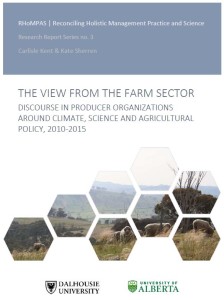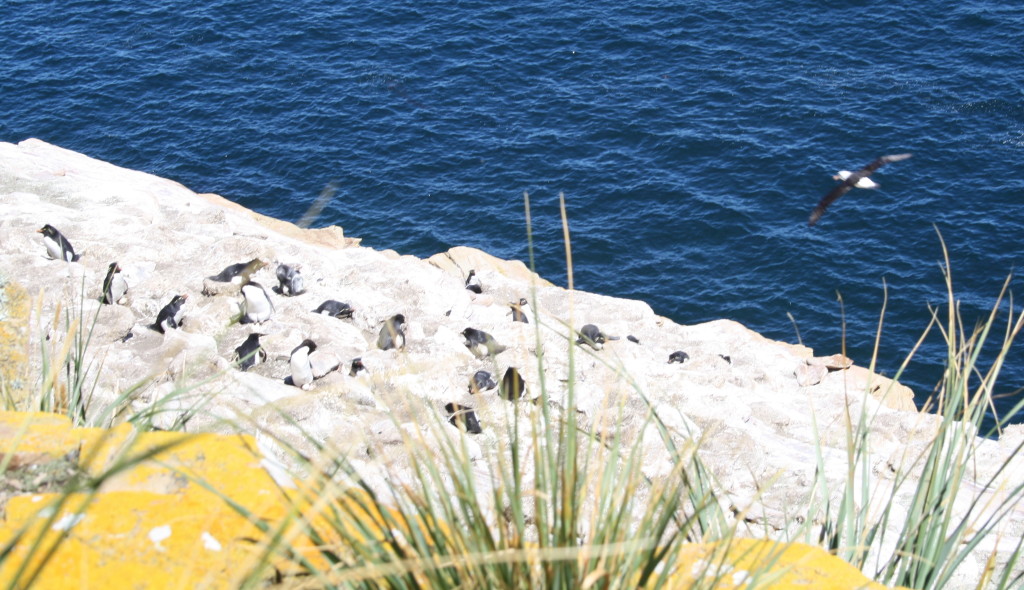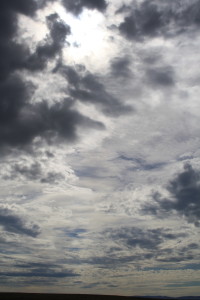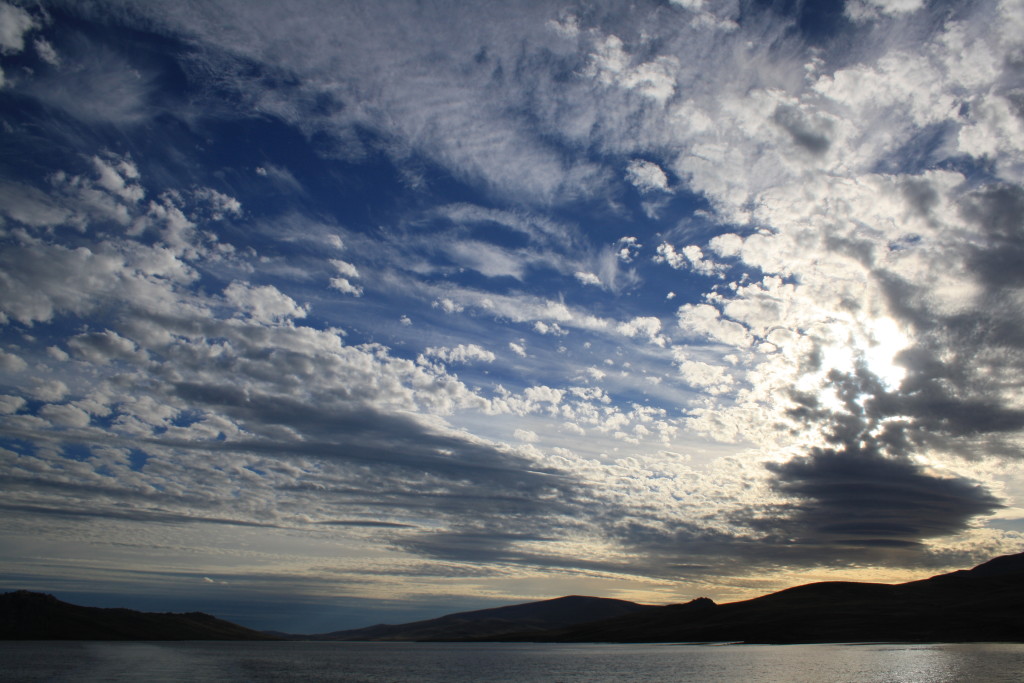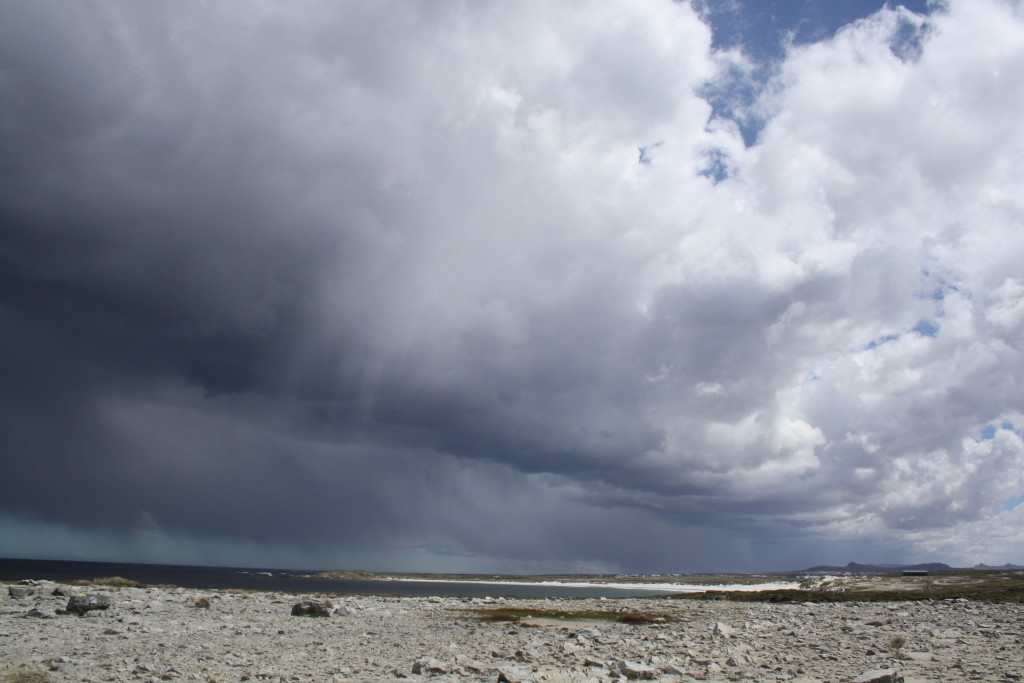Carlisle and I are happy to finally release her third report for my sustainable grazing project, which is based on research she undertook in winter 2016, The View from the Farm Sector: Discourse in Producer Organizations around Climate, Science and Agricultural Policy, 2010-2015. We were interested in looking for the farmer’s voice in Canadian discourses around grazing and climate change. We decided in the end to do so via producer organizations who give voice to widely distributed individual producers. This report describes the discourse by farming organizations around climate, and resulting hardships, as they are expressed to a range of audiences, across different scales (Canada and Alberta) and commodity groups. We collected almost a hundred documents that represented the climate-related public and policy engagement of Canadian and Albertan livestock producer organizations from 2010 to 2015. We did not seek to track any trajectory over that time, because of small and/or uneven numbers of documents in any given year, but rather use those documents to take a snapshot of discourse. Interesting patterns arose around which organization types are talking about climate versus weather, and to whom, and what sorts of interventions they thought might help the farming sector.
Tag: climate

My softcover edition of Sightlines (2012) looks like this.
While my first Kathleen Jamie experience, Findings (2005), came serendipitously while browsing the Halifax Central Library, my second was bought for me for Christmas by someone who knows me well. Dedicated “for the Island-goers” this spoke directly to me, fresh from the Falklands. Jamie is also a poet, and it is with such carefully chosen yet spare and modest language that she tackles these essays that work the vein between human and nature. Several concern remote islands and outcrops like St. Kilda and Rona, with historic human occupation that speaks of human ingenuity and fortitude, and where novel landscapes persist as a result. A favourite one conveys the zen experience of the Hvalsalen, the ‘whale hall’ in the Bergen Museum, its history and its renovation, which is recalled later in a meditation on the use of whalebone as memorial and in craft. One called ‘pathologies’ explores the human body as a habitat, for bacteria among other challenging organisms, inspired by our tendency to be selective about what we consider nature worth saving, or worthy of our awe. Yet another talks about Jamie’s experiences as a young archaeologist, excavating to ‘save’ history from development while erasing it. These are some of my favourites essays in this collection, which also have others focusing on natural phenomena like orca, aurora and seabirds. My preferences are not surprising given my interest in things social: after all, when presented with colonies of rockhopper penguins and black-browed albatrosses on West Falkland, I asked, “Can we go back and watch the shearing?”. Jamie needs to go next to the Falklands, given her fascination for remote islands, wind, and the history of human industry including whaling and agriculture. I think I’ll write and tell her.
When Alexandra Harris describes, in Weatherland, the slow introduction of real skies in English paintings, leading up to the cloud obsession of Constable in 1821-22, I cannot help but think of the Falkland Islands. My first trip I spent looking at the landscape, at large scales and small. This time, I was captivated by skies. As any visitor to the prairies knows, a lack of trees makes for big skies. But nothing is quite like the skies of the Falklands. No filters needed, or photographic skill. (It was hard to choose road trip music to suit such majesty, but I settled on London Grammar’s 2013 If You Wait.) The experience begged the question of where ‘landscape’ – my chosen research topic – ends: these skies are likely as fundamental to local identity as terrestrial (or marine) properties. A small sample of my pictures follows, in which land plays a very minor role indeed.
Becalmed in Heathrow after a cancelled flight returning from Portugal this fall, I picked up Alexandra Harris’ Weatherland (2015) to ease the wait. Last night I finished it. Why so long? Well, it was a busy time, and I dipped in and out between work travel and renovations. Frankly, at times like that, nothing other than fiction gets more than a page read at bedtime before oblivion. But I also savoured it. This is not a book to be rushed. It’s a beautifully written liberal arts education in paperback.
Harris goes back centuries to track the influence of weather and seasonal cycles on art and literature, and in doing so, tracks changes in awareness as well as public preferences fads in scenery. For instance she records Robert Burton’s observation in the early 1600s, in Anatomy of Melancholy, how “thick, cloudy, misty, foggy air or such as comes from fens, moorish grounds, lakes and muckhills” (p. 120) uniformly lower spirits. (Rod Giblett would say not much has changed in public perceptions of wetlands.)
Later, in the 1700s, the English idealize the Italian landscape, and painters like Richard Wilson tried to capture those moments when the English light matched that of the Mediterranean, like the paintings of Claude Lorrain from the previous century. I loved Harris’ description of the ‘Claude glass’ which was a small mirror carried to help late 18th century tourists get the painterly effect on a dreary day. Comically, users turned their back on the landscape and viewed it in reflection, the light changing toward the sublime thanks to the mirror backing. We cannot look back in anything like superiority given the popularity of the selfie stick.
Fast-forward a hundred years to the Victorian tourist for whom the fad was not light but shade, and public ferneries and the miniature, dappled, dripping landscapes they foster. I can relate. This attention to small scale makes me think of Macfarlane’s revelation in The Wild Places, as well one of my favourite quotes about Sable Island, in the Introduction of McLaren’s 1981 Birds of Sable Island:
A much travelled colleague has remarked that he has been in places more beautiful than Sable Island, but has seen more beauty there than anywhere else. The expansive seascapes and dunescapes, magnificent yet ‘dreary’ to some 19th century writers, soon force one’s attention to the smaller scale.
Harris moves forward to the poetry of Ted Hughes in the 20th century, for a distinct lack of the romantic in weather. Rather, life and death, as well as livelihood: of mending a tractor in the cold: “Hands are wounds already / Inside armour gloves” and “Between the weather and the rock / Farmers make a little heat”. She finishes in this century, as was inevitable, on climate change and how we should respond. There is little art and literature yet to draw upon here, but again scale is evoked (p. 386): “small alterations in familiar places can disturb us more than dystopian visions”. She invites us to savour and record now for remembering later: “certain plants in certain places, the light in the street after rain”, what she calls ‘intimate elegies’, reminding us that “in the sadness there is room for celebration.”
